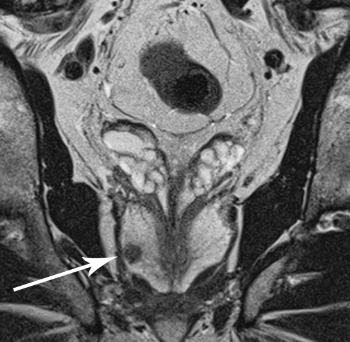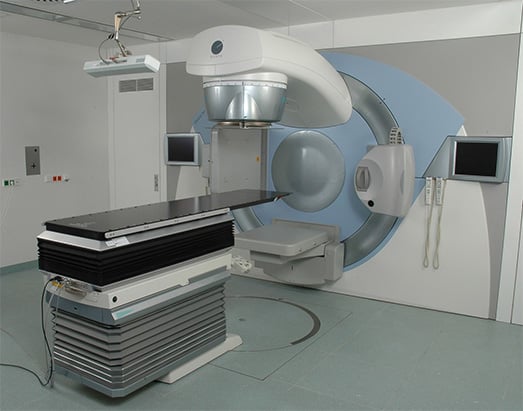Prostate Cancer
Overview
General Information about Prostrate Cancer
The prostate gland is an important organ in the reproductive and urinary system in men. It is responsible for the production of seminal fluid in semen. The gland is located at the base of the bladder; it is divided into two lobes with the urethra at the center, as seen below.

Prostate cancer is the most common cancer in men. Statistics from the United States indicate that in 2014 there will be as many 233,000 new cases of prostate cancer. That will account for 24% of all cancer. It is also a major cause of death second only to lung cancer. The latest figures show that in 2014 there were 29,480 deaths as a result of prostate cancer. Prostate cancer is a slow spreading cancer, as such, early detection will aid greatly in making treatment a success.
Diagnosis
Prostate cancer is most commonly found in men at the average age of 70. Patients will visit the doctor with symptoms such as difficulty passing urine, including straining to pass, inability to urinate, and blood in the urine or semen. Presently an effective method of diagnosis is the digital rectal exam (DRE), during which a gloved, lubricated finger is inserted into the rectum to feel for any bumps or hard areas on the prostate that might be cancer. Another effective method is the prostate-specific antigen (PSA) blood test which is used mainly to try to find prostate cancer early in men without symptoms. But it is also one of the first tests done in men who have symptoms that might be caused by prostate cancer. This is recommended for males aged 45-50 years and who have a family history of prostate cancer.

Performing a biopsy on the prostate can also be an effective pathological diagnosis and treatment method. It has been found that 95% of cancer cells in the prostate are Adenocarcinoma. Following diagnosis, analysis of family history, and health check-up, it is also important to perform other tests to determine whether the cancer has spread. This can be done via an MRI, bone scan, X-ray, or PSA according to the symptoms displayed by the patient.

Treatment
Treatment for prostate cancer includes surgery, radiotherapy, hormonal therapy, and chemotherapy. The choice of treatment will be dependent on stage of cancers and other risk factors. Patients in the low-risk group will require local treatment such as radical prostatectomy which may include external beam irradiation or brachytherapy. Patients who have higher risk factors are in the moderate risk group or high risk group; these may require what is referred to as regional treatment, or systemic treatment. Treatment will include the surrounding areas for example pelvic lymph node dissection or pelvic lymph node irradiation. Systemic treatment also includes androgen deprivation therapy and chemotherapy.


In cases where the cancer has grown and/or has spread to other organs and the patient is in a poor physical condition, there are higher risks that treatment will cause unwanted side effects. The treatment we offer will focus on providing a good quality of life for the patient, treatment decision will be based on the stage of cancer, symptoms, and needs of the patient and his/her relatives (palliative care).
Services in prostate cancer treatment will be provided by a team of oncologists, nurses, and other multidisciplinary medical personnel. We offer multi-dimensional care that takes into consideration physical, emotional, and social needs of the patient and his/her relatives.
Wattanosoth Hospital is designed to offer comprehensive care for cancer patients, from the screening and early detection program, treatment with hi-end technology, a multidisciplinary medical team, and a palliative care team.
Author
Dr. Chanawat Tesavibul
Radiation Oncologist